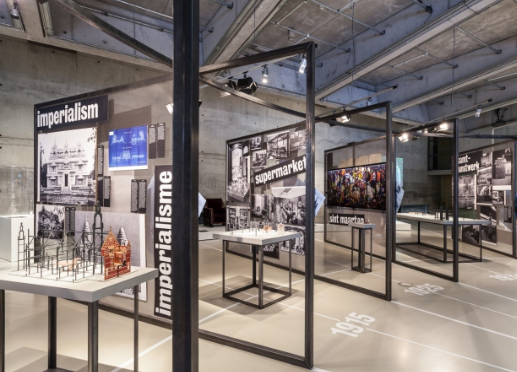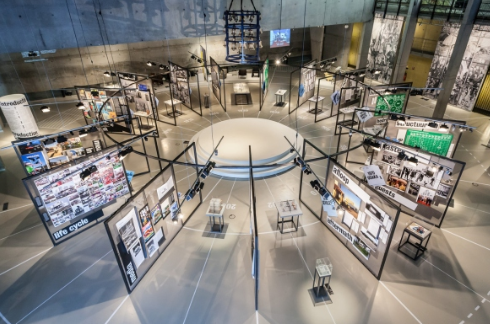Now at the halfway point of the six month long World Expo in Milan, in which 145 countries are participating
in a concentration of national spectacle surrounding the theme of “feeding the planet,” Rotterdam’s Nieuwe
Instituut (HNI) — the centre for architecture in the Netherlands—is exhibiting an altogether more reflective
display of national civic pride.


Rotterdam, which was blitzed and decimated during the Second World War, is a place well suited to host an
exhibition whose underlying theme centres on the fragile, often precarious notion of national self-image.
Following the war Rotterdam was forced to rebuild itself, carving out a new place on the world stage and
reestablishing its importance as an international port. Now, seventy years later, Rotterdam is a very different
place. In demonstrating just how delicate the construction of a tangible national identity can be this
exhibition at the HNI offers up a sincere speculative base for self-reflection.
Since the war, Rotterdam has become a progressive cultural destination for art, architecture and music. In fact,
businesses and residents of the city have already started to lobby to host the World Expo in 2025. Reflecting on
this apparent impasse, What is The Netherlands? examines fourteen previous Dutch entries to World Expos held since
1910 (when the country’s first pavilion was constructed in Brussels), through a collection of furniture, fragments
and reconstructed pavilions. As curator Stephan Petermann describes it: “Each expo entry is a glance in the mirror,
showing where the Netherlands was at at a particular point in history, where it wanted to be, and how this reality
and desire can be displayed through an exhibition.” This latent dialogue between “modernity and nationality, economy
and image, corporate opportunism and collective ambitions” is transmitted through a circular framework based on
Frédéric Le Play’s plan for the 1867 World’s Fair in Paris, “in which the fourteen historic Dutch entries each
have an equal stake.”
The effects of globalisation and national identity form the exhibition’s undercurrent, evidence of which can be found
in each pavilion on display; in this way it feels like a thematic distension of last year’s Biennale in Venice. In 2013,
OMA’s Rem Koolhaas announced that his direction of the 2014 Biennale di Venezia would explore Absorbing Modernity,
1914-2014 in order to “show the erasure of national characteristics.” Petermann, an AMO Associate at OMA, helped to
realise Koolhaas’ ideas. One of the suggestions that they gave participating nations was to look at their own national
pavilions that were entered for international presentations as a way of understanding how their own countries had
with the rise (and collapse) of modernity. Although this latest exhibition is altogether more focused, the ideas it
highlights validates this approach.
The inner ring of the circular exhibition focuses on the dialectic between governance and lyricism embedded in each Expo
entry, while the second ring presents a selection of artefacts from each respective pavilion. Each section contains a
modelled reconstruction of the pavilion – all displayed at the same scale – showing with intriguing clarity the
successive development in size and design. The ‘bureaucratic wall’ features thematic sections concerning the political
machinery behind each development: discussions on the purposes and intentions handed to designers, economic realities
like the budgets, and diplomatic handiwork. The ‘lyrical’ side features a speculative highlight of that year – the
most expressive paintings, sculpture, and films shown in the exhibition.